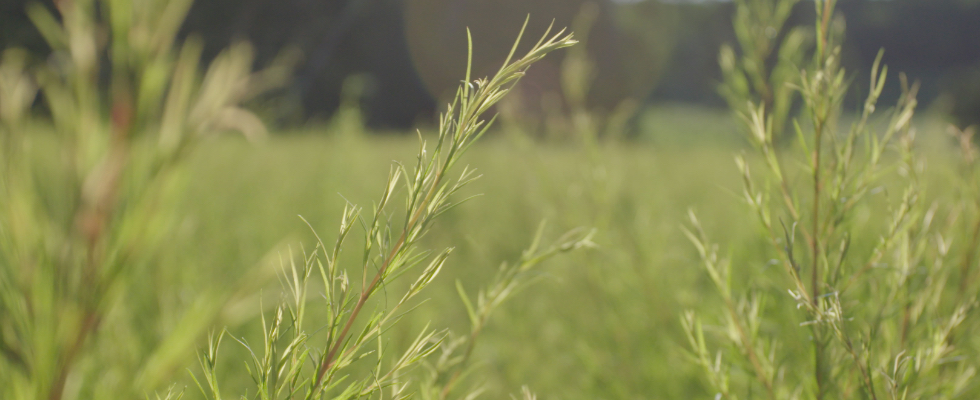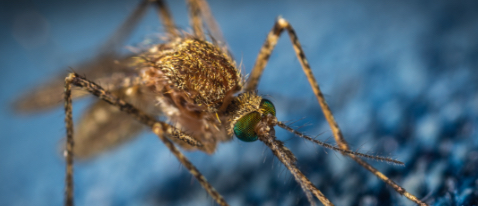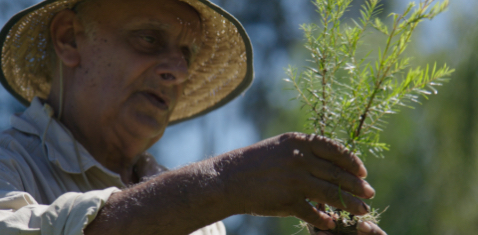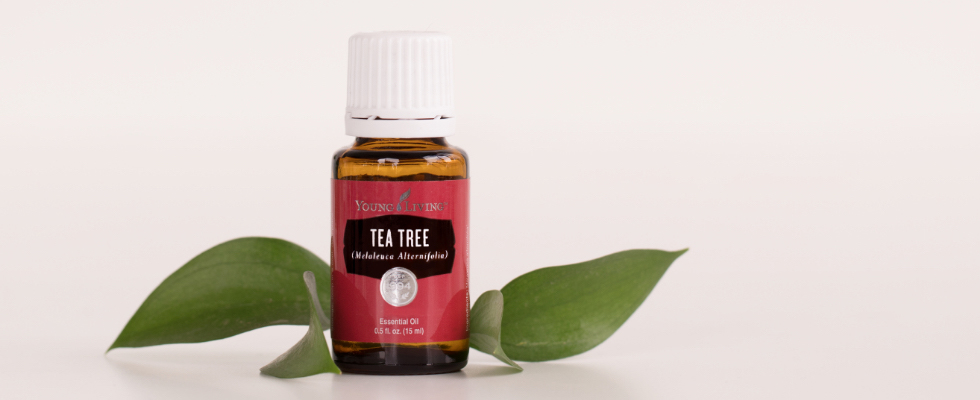From treating acne to constructing homes in the Australian outback, the Melaleuca plant has a reputation that precedes it for being exceptionally practical. As you learn more about the history of this well-rounded, powerhouse plant, you’ll find its applications are virtually endless. Read on for some historical uses of nature’s gift, Melaleuca, the tea tree.

About Tea Tree: The Basics
Melaleuca refers to a group of about 300 different species of plants and trees that are part of the myrtle family. Because of their peeling, papery bark, they are commonly known as paperbarks (go figure!). Tea Tree has an exotic look and fragrance, with an alternating pattern of elliptical leaves, ranging from dark to gray-green. It usually grows to around 6 meters tall and 4.5 meters wide.
Melaleuca trees and shrubs can range from 1 meter to 30 meters tall! The flowers grow in a formation that looks like a brush, which some people even use to clean bottles. Melaleuca’s flowers are a vital food source for many animals, birds, and insects for their sugar-rich nectar.
Melaleuca or Tea Tree: What's in a Name?
Melaleuca got its name from Ancient Greek mlas meaning “black” or “dark,” and leuks meaning “white.” This oxymoronic name most likely comes from the first acknowledged specimen of Melaleuca, which had white bark that had been blackened by fire.
While ‘Melaleuca’ refers to the scientific name of a genus of different species, each species has an individual scientific name; such as Melaleuca aspalathoides and concinna for shrubs, and Melaleuca cajuputi and quinquenervia for trees. Melaleuca alternifolia is the better-known genus used for essential oil.

The first known record of a tea tree species was written by Rumphius in 1741, before the present system of naming plants. In 1767, Carl Linnaeus was the first one to use the name Melaleuca, which we still call it today. This name also refers to the Baeckea, Kunzea, and Leptospermum species. In 1770, during Captain James Cook’s maiden voyage to Australia, sailors used the leaves from these different shrubs as an alternative for tea. The nickname “tea tree” stuck after that!
Where do Tea trees Grow?
Tea trees grow in a variety of habitats, including waterlogged fields. Some species can survive saline and arid environments where few plants grow. Though it is native to Australia, tea trees are grown in many other parts of the world due to their rising demand and extensive commercial use.

Within Australia, they have the most significant density in Northern and Western Australia, and some grow in Tasmania. One of the subspecies of Melaleuca cajuputi is found as far as Vietnam, Thailand, and Myanmar, and the Melaleuca howeana is endemic to Lord Howe Island.
Historical Uses for Melaleuca
Humans have used tea trees and tea tree oil for ages. Beginning in Australia and spreading to the rest of the world, both modern and indigenous societies have found tea trees useful. Let’s discuss some of those uses!

Australian Aboriginal Uses for Tea Trees
Aboriginal Australians, indigenous people of the Australian mainland, have been using Melaleucas for their health, rafts, and rooftops for centuries. It’s been well documented that the Bundjalung Aborigines in eastern Australia have used tea trees to treat ailments including coughs, colds, and sore throats by inhaling the smell from the crushed leaves, and drinking an infusion of Melaleuca tea. They would use tea trees to treat skin infections, bug bites, stings, and minor wounds by putting crushed leaves from the plant on the affected area, and then sometimes cover it with warm mudpack.
The Bundjalung people’s profound appreciation for tea trees is deeply rooted in their heritage and folklore. The legend of princess Eelemani has been passed down by the Bundjalung people through generations. In this story, the princess Eelemani left her true love and family to journey along the coast of New South Wales. She didn’t know the way and worried about the journey home to her love and family. During her travels, she would speak to the gods about the earth and planets, and in return, they gave her magical Melaleuca seeds. With the help of the birds, princess Eelemani would spread the seeds along her journey, and the moonlight would reflect on the tree’s beautiful, papery bark to light her way.
Legend goes on to say that over the eons, the Bundjalung people learned of the magical properties of the trees as well. Just as the trees protected the princess, they found that the leaves protected them against skin ailments and infections.
Tea Tree Oil
The indigenous Australians aren’t the only ones to find tea trees useful. Melaleuca alternifolia is famous for its essential oil, popularly known as tea tree oil. This mass-produced oil is readily available in the marketplace and can be safely used for topical applications. It has a camphor-like smell and ranges from colourless to pale yellow. This oil has generally been used for treating various ailments related to skin, hair, and nails: it is applied on the surface of the body only. Leaves of the Melaleuca alternifolia plant are used to extract this oil, which is available as neat oil or in its undiluted form. Many diluted types are also available.
Another species, Melaleuca cajuput, is utilized to produce cajuput oil. This is used to add fragrance to food and has been used in Southeast Asia to treat various infections.
Melaleuca is primarily made up of sesquiterpenes, monoterpenes, and terpene hydrocarbons. These compounds are known for antifungal, antiviral, and antibacterial activity. According to some studies, tea tree oil contains terpinen-4-ol, among other compounds (1, 2). Another study claimed that tea tree has several antibacterial and antifungal properties and increases the efficacy of white blood cells (3). Its volatile hydrocarbons are aromatic and travel through the air.
Topical Uses for Tea Tree Oil
Although some indigenous cultures were unaware of the chemical components of the tea tree, they still tapped into its power. Below you’ll find a list of other discovered uses for Melaleuca:
Hand Sanitiser
Although tea tree oil had been used by the native Australians, it wasn’t until 1922 that Melaleuca emerged in the scientific arena. After he found what seemed like bactericidal properties, Australian chemist Arthur Penfold was able to confirm that the oil was non-caustic to the skin, meaning it didn’t burn. This was an important finding to open up tea tree for topical use.
Most hand sanitizers contain chemicals which can be strong on your skin. Tea tree oil can provide a gentle alternative. This oil can be used as a natural hand purifier because of its antimicrobial properties. One study indicated it could affect viruses like E. Coli (4).

Insect Repellent
Many insect repellents contain chemicals which can also be harmful to humans. According to one study (5), it was indicated that tea tree oil was even more effective than DEET (N, N-diethyl-meta-toluamide) which is the primary element of most mosquito repellents.
Body Deodorant
Some natural deodorants use tea tree oil as an alternative to other artificial ingredients. Since sweat has no smell of its own, the scent which we refer to as “body odour” happens when bacteria interact with sweat, leaving waste products (which do smell!). Some people have experimented with tea tree oil as a natural deodorant to reduce these bacteria, and in turn, bad B.O.

Improving Scalp
Another topical use for tea tree oil is for scalp treatment. Seborrheic dermatitis, which is a skin condition leading to dandruff and scaly patches on the scalp, can cause unwanted discomfort. According to the four-week study published in the Journal of The American Academy of Dermatology in 2002, a 5% solution of tea tree oil worked in 41% of the cases, while placebo improved only 11% of cases.
Nail Fungus Treament
Fungal infections in nails are quite common. Although they are harmless, they can be unsightly. There are several medications available for treating nail fungus, but some people prefer to use natural products like essential oils. Tea tree oil by itself has been helpful in the cases of nail fungus or in an amalgamation with other natural remedies.
In a six-month study, two groups of people used tea tree essential oil or a nail fungus medication. Both the antifungal medicine and tea tree oil tests performed about the same, with 60% of people experiencing positive results (9).
Athlete's Foot
During World War II, a critical outbreak of tinea pedis, also known as athlete’s foot, affected hundreds of Australian soldiers, landing them in hospitals with no real treatment at hand. After experimenting with tea tree oil, they found it helped significantly with the healing process. The country made extra efforts to have sufficient stores of tea tree after that.
Athlete’s foot is a fungal infection that generally spreads to toenails and sometimes to hands, with symptoms including peeling and cracking of skin, along with blisters and redness. It is contagious and can be frustrating to control. Antifungal medication is usually prescribed for treatment. In a controlled study, only 39% of patients in the placebo group saw an improvement, while 72% of the patients in tea tree oil group saw an improvement (11).

Mouthwash
Some people have used tea tree oil to treat tooth decay and bad breath. According to one study, tea tree oil had even better results than chlorhexidine, a chemical used in most mouthwashes (7). One problem people encounter with mouthwash is the pungent chemical taste. Tea tree oil helped to reduce this problem. Though it may taste better, tea tree oil is dangerous to swallow. It can cause serious problems such as irritation, diarrhea, nausea, and coma.
Antiseptic
From his discoveries in 1922, Arthur Penfold discovered tea tree oil had a Rideal Walker coefficient in between 11-13. From this, he deduced that the oil was 11-13 times more effective that phenol (carbolic acid) when it came to fighting bacteria and fungi.
Shortly after, in 1930, the Medical Journal of Australia published “A New Australian Germicide;” a report that tea tree oil could treat wounds and infections without any known side effects. Cuts and bruises can become a breeding ground for different germs and bacteria, so to avoid any complications that come from infections, some people, like the Bundjalung, have used tea tree oil as a natural antiseptic to dress cuts and bruises. Along with using it as an antiseptic, they would also use it as an anti-inflammatory.

Fighting Acne
In 1904, George Korner, a chemist for cosmetic products, invented the first skincare product using tea tree oil. This started being sold in UK stores in 1976, and eventually worldwide today. Past research studies have also shown that tea tree oil can be used for fighting acne, and in one study, it showed to be three times more effective than the placebo (6, 7). In a different study, it was found to be as effective as benzoyl peroxide, a chemical compound used in top acne medicines.
Cleaning Purposes
In addition to topical applications, some people have used tea tree oil for cleaning. The primary purpose of cleaners is to remove spots and stains while sanitizing at the same time. Tea tree oil has been effective for this, along with other natural products like apple cider vinegar, which works as a deodorizer for different stains.
Reducing Skin Inflammation
Tea tree oil’s anti-inflammatory properties have led people to use it to relieve skin inflammation. In a study to compare the effect of tea tree oil with other medications, they found it helpful to reduce symptoms by 40%, which performed better than conventional drugs. It may also be used to treat bug bite reactions by reducing the redness and swelling. Tea tree oil should be used in conjunction with a carrier oil like olive oil or coconut oil to have the best results.
Tea Tree Care and Horticulture
Tea trees have been used as a garden plant in most tropical areas throughout the world. They have been grown in parks and gardens as trees, and even for ornamental purposes. Melaleuca alternifolia is an evergreen tree, which makes it suitable for homes and farms. It grows well in warm climates and thrives when it is provided with ample sunlight.

For best results, tea trees require moist soil. However, it’s important to avoid overwatering them. To keep from waterlogging, proper drainage is necessary. Prolonged periods of flooding and droughts can be very damaging to the cultivation of tea trees. If the climate is warm, they can be planted in a garden; otherwise, they should be planted in vessels where they can be moved out during the summer and taken inside during the winter.
Tea trees can grow as much as a couple meters per season and flowers start to bloom after only a few years. At the time of harvesting, one must ensure that there is no weed contamination. Weeds will take nutrients from the soil and reduce the total nutrients available for the trees. To help with this, lambs can graze the pastures to minimize weeds, and hens can keep the grounds free from unwanted plants and pests.
The plants get ready for the first harvest after almost two years from the time they are sown. Tea trees are harvested annually to distill oil from their leaves. This yield improves over the years as their network of roots gets stronger. Traditionally, oil was harvested manually and distilled using crude bush stills.
With an increase in demand for tea tree oil from all over the world, it brought the attention of researchers. Australian Tea Tree Industry Association (ATTIA), Australia Rural Industries Research and Development Corporation (RIRDC), and Department of Primary Industries (DPI) started a tea tree breeding program. This program resulted in improved seeds which increased their yield by 90 percent. This has helped the farmers and the government to sustainably fulfill the demand of the oil without impacting future resources.
Caution When Using Tea Tree Oil
As you might have noticed, all uses of tea tree oil are external. If ingested, tea tree oil is toxic to the human body, so use caution! Parents should take extra measures with little ones who are prone to put things in their mouth. Similarly, it should be kept away from pets as it has proven to be harmful to them in some cases if ingested.
Essential Oil Patch Test
Even though people have used tea trees throughout history, it’s still important to check if you are allergic. You can perform a skin patch test by putting a tiny bit of oil on a small area of skin and then wait for at least 24 hours for any allergic reactions. For sensitive skin, you should mix the oil with another carrier oil, such as olive or coconut oil.
Young Living Uses for Tea Tree Oil

Just like people have historically used tea tree, Young Living loves to use it for all kinds of applications. Some of those uses include skincare and hair treatment, household cleaners, air fresheners, and linen spritzers. These are just a few options for tea tree, and it’s exciting to learn more as more information emerges. You can learn more about how we use Tea Tree Oil at YoungLiving.com!
Shop Tea Tree Oil- https://www.ncbi.nlm.nih.gov/pubmed/16418522
- https://www.ncbi.nlm.nih.gov/pubmed/27388769
- https://www.ncbi.nlm.nih.gov/pubmed/10519561
- https://www.ncbi.nlm.nih.gov/pubmed/15694979
- https://www.ncbi.nlm.nih.gov/pubmed/26412058
- https://www.ncbi.nlm.nih.gov/pmc/articles/PMC4132408/
- https://www.ncbi.nlm.nih.gov/pubmed/17314442
- https://www.ncbi.nlm.nih.gov/pubmed/12553397
- https://www.ncbi.nlm.nih.gov/pubmed/8195735
- https://www.ncbi.nlm.nih.gov/pubmed/2145499
- https://www.ncbi.nlm.nih.gov/pubmed/12121393
- https://www.ema.europa.eu/en/medicines/herbal/melaleucae-aetheroleum

.png)
.png)
.png)